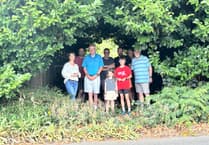Salmonella outbreaks will become more common due to climate change, research by experts at the University of Surrey has found.
Scientists say global warming is increasing the risk of the potentially deadly stomach bugs spreading.
The study by researchers at the University of Surrey’s School of Veterinary Medicine, investigated the impact of different weather factors on the transmission of salmonella.
The bacteria is the leading cause of food-borne illnesses in Europe, accounting for nearly one in three food poisoning outbreaks.
Salmonella is found in the intestines of animals and humans and can contaminate food if it’s not cooked or handled properly.
It can cause diarrhoea, fever, and stomach cramps, and it is most prominent in areas with poor sanitation and hygiene.
Dr Gianni Lo Iacono, senior lecturer in biostatistics and epidemiology at the University of Surrey, said: “The model we used to analyse the data shows promise, as the findings were replicated across England, Wales and, independently, in the Netherlands, suggesting a potential for wider application in other European and high-income countries to help gain new insights on the incidence of Salmonella.
"It would be interesting to investigate this in regions with very different environmental and socio-economic characteristics, like tropical countries.”
Study first author Dr Laura Gonzalez Villeta added: “The study highlights how weather plays a significant role in Salmonella outbreaks and provides a valuable tool for predicting future risks and tailoring interventions, particularly in the context of climate change.”
The research team compared UK Health Security Agency (UKHSA) data of confirmed cases ofSalmonella in England and Wales during the period from 2000 to 2016 with Met Office data of the time, focusing on 14 different weather factors.
Warmer temperatures of above 10 C (50 F), relative humidity, and longer hours of daylight were identified as "key" weather factors associated with an increase in salmonella cases, irrespective of geographical location.





Comments
This article has no comments yet. Be the first to leave a comment.